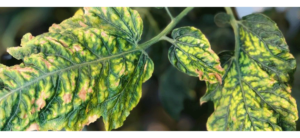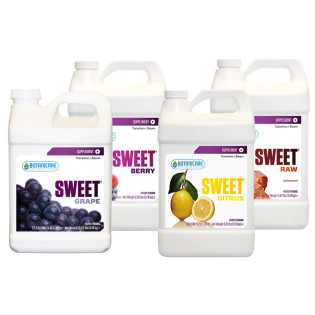
Molybdenum is one of six micronutrients required by green plants, along with iron, copper, zinc, manganese and boron. It is seldom deficient and is considered an immobile nutrient.
Why Is Molybdenum Important To Plant Health?
Molybdenum is required to convert the nitrogen that is taken up by the plant, into ammonia, a process that is required for plants to function and thrive.
During the growing process, molybdenum is vital for the nitrogen, oxygen, sulfur and potassium cycles and processing that occurs. It is most active in roots and seeds. Sources are captured and taken up through the roots of the plant, from its growing medium.
Identifying Molybdenum Deficiency In Plants
Molybdenum deficiency symptoms begin in the older leaves at the bottom of the plant. The leaves will appear yellow, and oftentimes the rest of the plant appears light green as the deficiency progresses.
- Younger leaves may have curled edges.
- Mid-level plant leaves yellow
- Leaves may have a pale green color
Examples Of Molybdenum Deficiency

How To Correct Molybdenum Deficiency
Any time a nutrient deficiency is suspected, one of the first things to take a look at is pH balance, in both soil and hydroponic growing systems. A pH imbalance will block nutrient uptake through the plant’s roots.
It is important to regularly check the pH, and to be sure to keep the pH within the appropriate range for soil or hydroponics. The optimal pH range for most plants is between 5.5 and 6.5.
In this range, the nutrients present in the soil or water are soluble and are easily taken up through the plant’s root system. When the pH level is outside of this range, even when the proper nutrients are present, they are not able to be absorbed by the plant.
Flush your plants and growing medium
Once you establish that your pH is within the correct range, a successful approach will be to flush your growing medium with fresh, pH balanced, nutrient-rich water.
This flush will give a pH reset and will remove any buildup of salts that may be affecting the uptake of molybdenum. You can also use a flushing agent to make this process more effective.
Another approach growers implement to increase molybdenum is through the use of foliar sprays. A diluted foliar spray of a feed containing molybdenum and other important nutrients can be used in the immediate short term, to bring the foliage back to a healthy green state.
Now you know the benefits of monitoring the molybdenum content in your soil and hydroponic growing systems. You should have a good understanding of what to do when you spot a deficiency.
Make sure you have the necessary tools on hand to keep your plants at their best health.
Want to learn more about nutrient deficiencies?
Read our entire nutrient deficiency series as well as learning about micro vs macronutrients.












